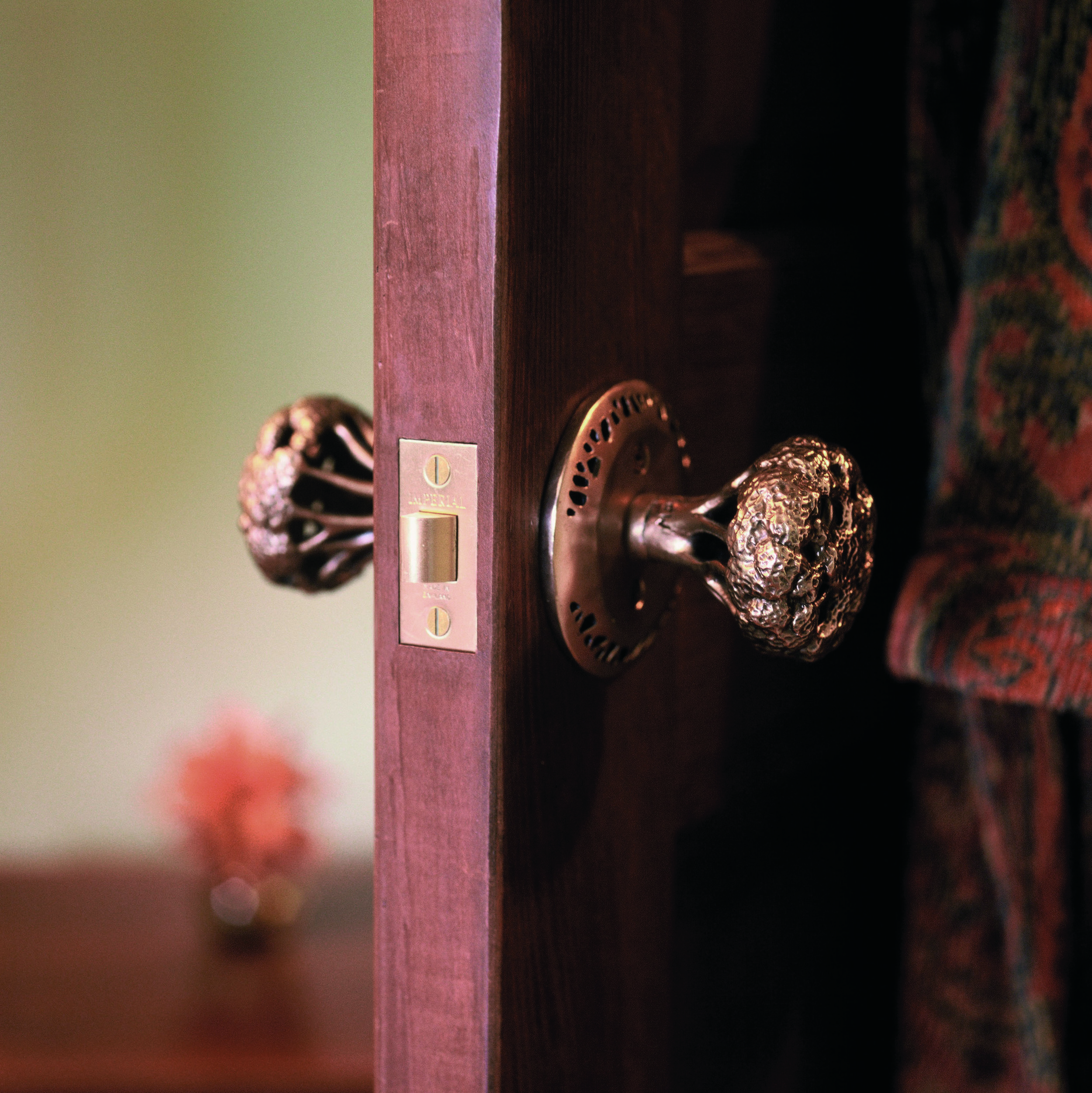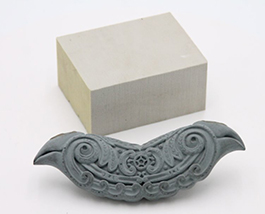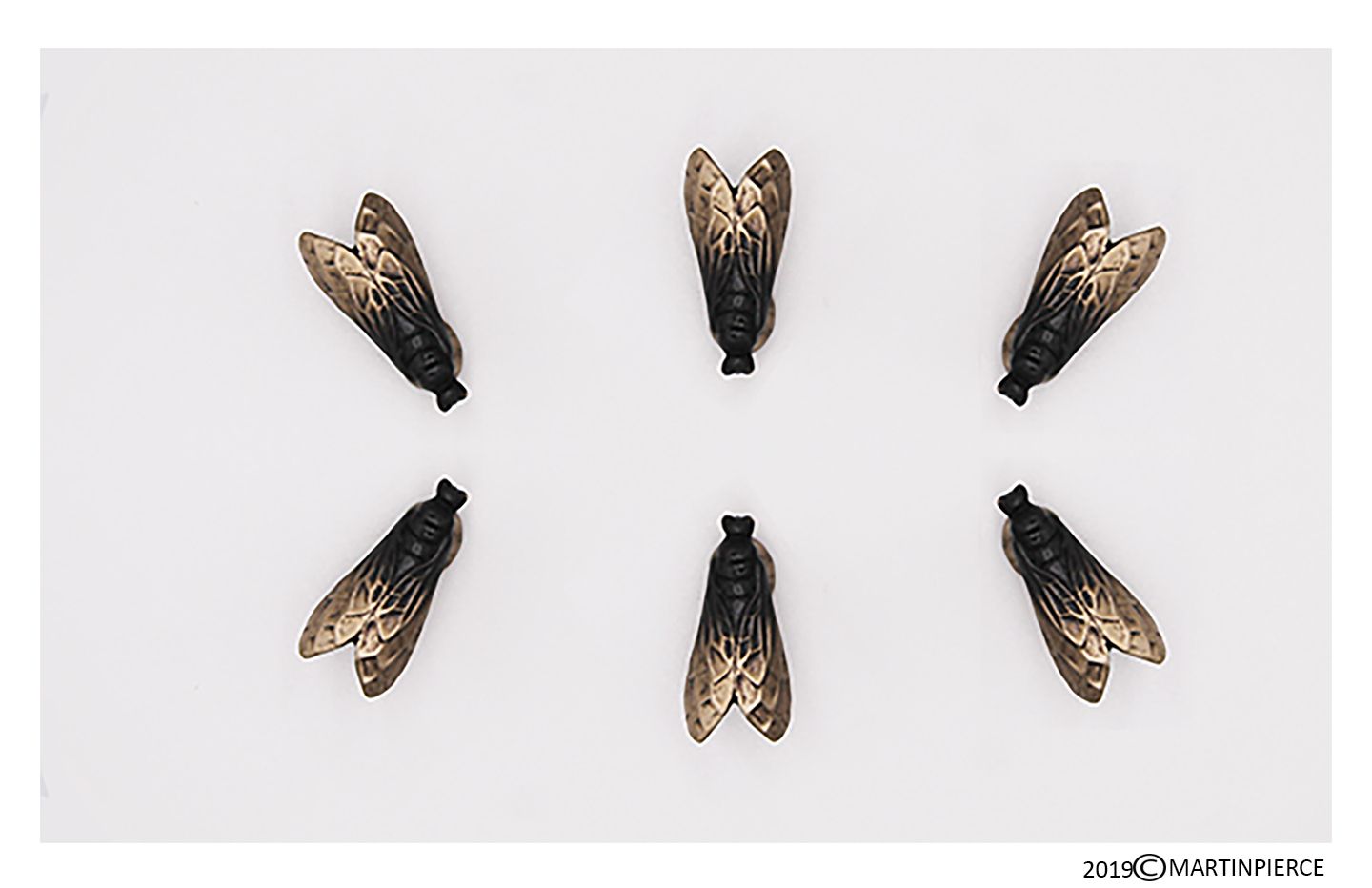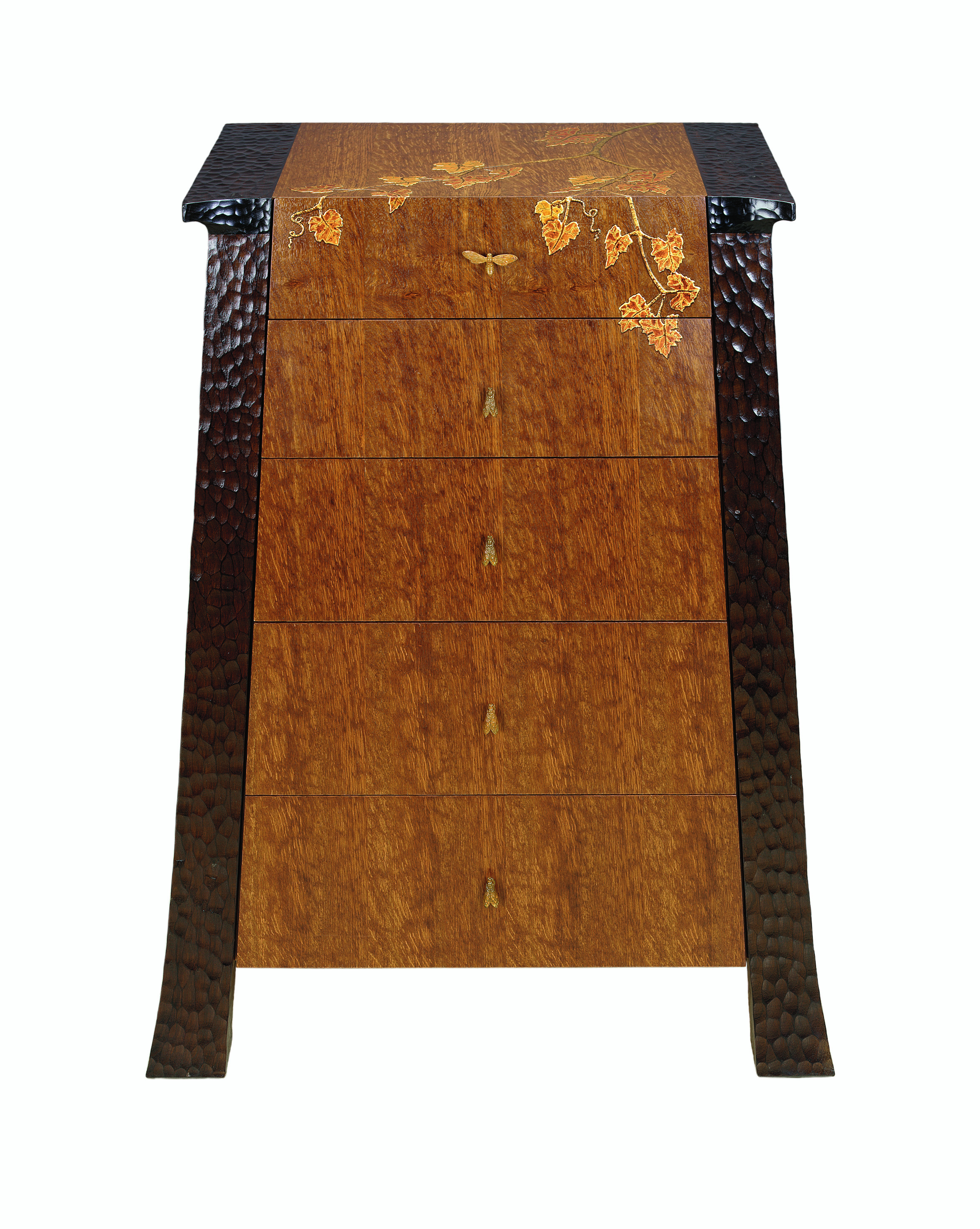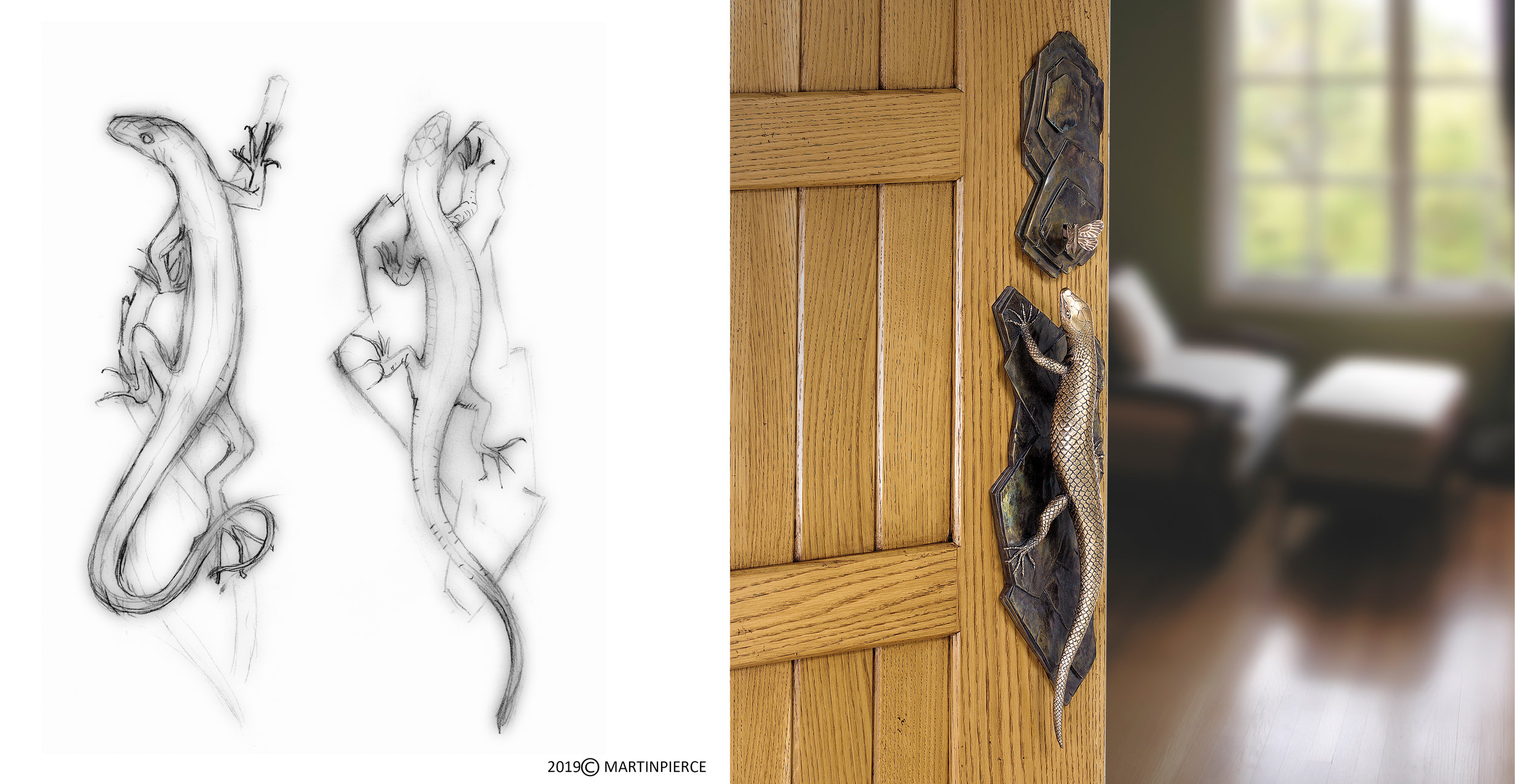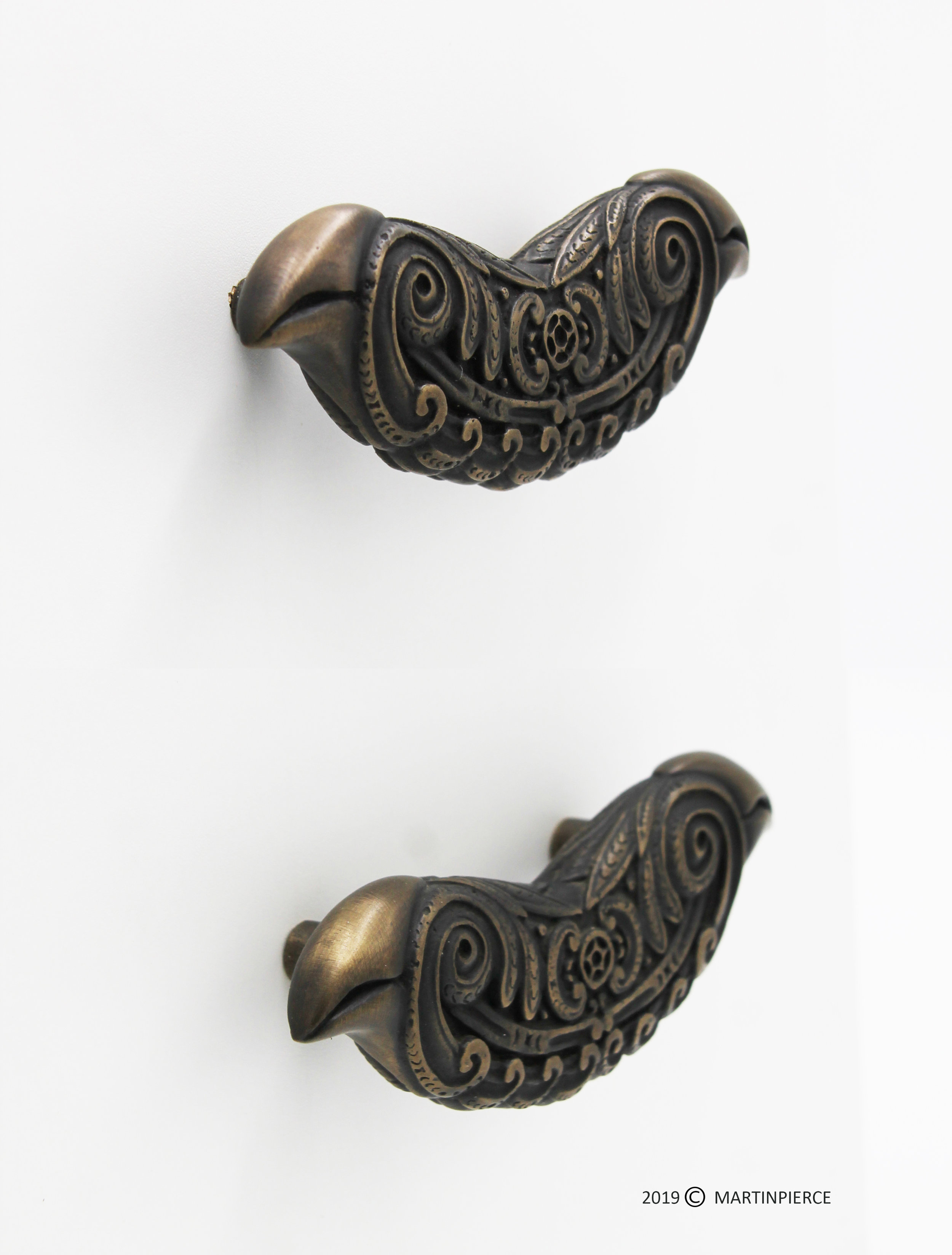We were recently commissioned by Meg King Design to make 4 Serpentine door handles in stainless steel for a very creative client she is working with. Meg wanted to add a custom dimension to the handles for her client’s barn doors and suggested we add a black accent. It would have been too mundane to add black to the entire piece so inspired by a photo Martin had taken of a black crested bulbul we added a powder coated crest to the top and bottom of the grip.
As mentioned in previous posts, stainless steel being a hard and dense metal does not readily absorb chemical patinas as they tend to slough off the surface. However, this alloy does work well with powder coating a process where color is added to the surface and then baked on creating a very durable finish. The range of colors and degree of luster available in powder form is extensive and most are also available in aerosol of liquids, so Meg was able to use the same black tone on the door astragals and barn door track. To pinpoint the right black, I turned to Dan Regan my trusted powder coating expert who is the owner of Primo Powder Coating in Huntington Beach who helped us select a matt black (10% gloss) BK120 powder manufactured by Cardinal Paint.
The bulbul shown here was photographed in the succulent section of the Huntington Gardens in Pasadena, a destination well worth visiting for its rich variety of native and exotic plants.




























